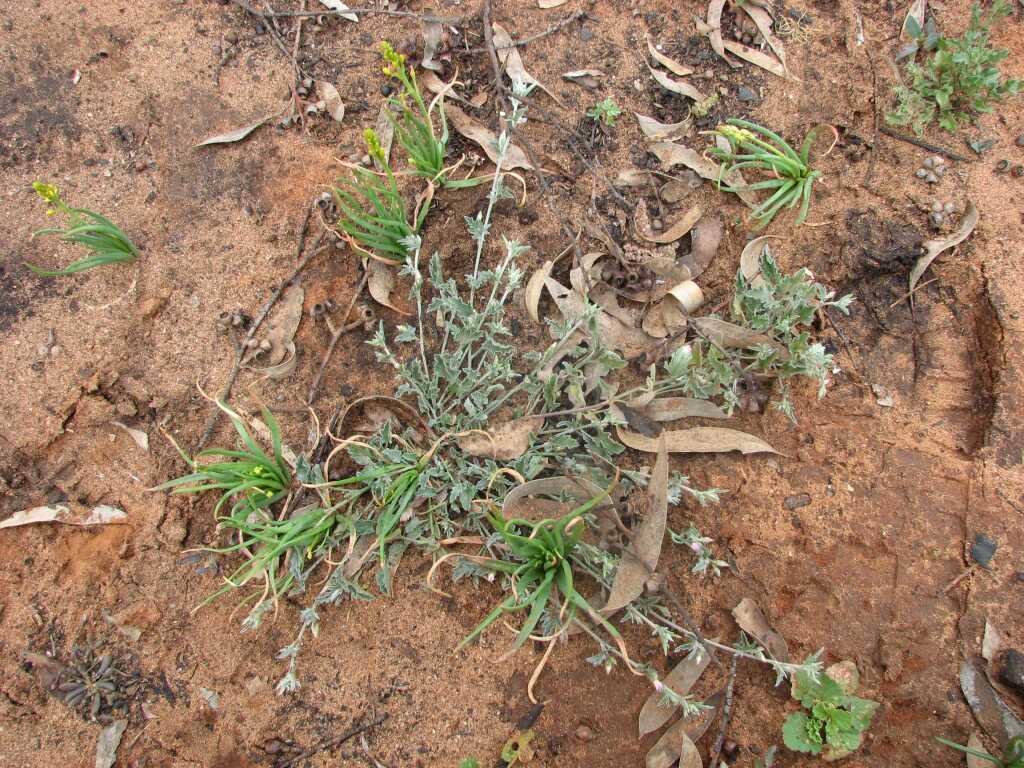Convolvulus crispifolius
F.Muell. Silver BindweedAnnual or short-lived perennial herb, spreading, with non-twining stems, densely silky-hairy. Mid-stem leaves ovate in outline, 5–20 mm long, 3–18 mm wide, apex acute or obtuse, base hastate or cordate, margins crenate or serrate or lobed up to halfway to midrib, crispate, densely appressed silky-hairy, silvery; petiole 2–15 mm long. Flowers 1 or 2; peduncles 2–12 mm long; pedicels 1.5–4 mm long, recurved in fruit, shorter than peduncles; bracteoles linear, 1.2–2.2 mm long; sepals broad-elliptic to suborbicular, 3.5–4.5 mm long, densely pilose; corolla funnel-shaped, 5–6 mm long, pink. Capsule globose to globose-ovoid, 4–4.5 mm diam., style-base persistent; seeds rough, minutely papillose, glabrous. Flowers in spring and early summer, but possibly also other seasons in response to fire.
LoM, MuM, RobP, OtP. Also NT, SA. In Victoria, apparently confined to the far north-west where found on sand-dunes, often only appearing after fire. A more easterly record from near Shepparton needs checking.
The silvery appearance of the plants, their non-twining habit, small leaves with toothed or lobed margins and small flowers on short, slender peduncles readily distinguish it from other Victorian species. It is generally rather rare, but may be locally common following fires.
Jeanes, J.A. (1999). Convolvulaceae. In: Walsh, N.G.; Entwisle, T.J., Flora of Victoria Vol. 4, Cornaceae to Asteraceae, pp. 365–375. Inkata Press, Melbourne.
 Spinning
Spinning

